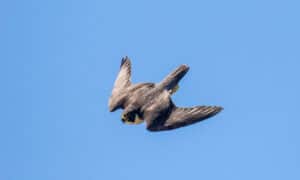Head to the store, and you can find white or brown eggs. However, those are only the tip of the iceberg when it comes to egg colors. One shade that has grown in popularity in the last few years is blue eggs. They are becoming so popular that chicken breeders have spent time honing in on the traits that result in blue egg production. Some breeds will only produce this shade, but others only lay them on occasion. If you are interested in getting some of these fascinating eggs, we can help. Here are seventeen chicken breeds that lay blue eggs.
1. Ameraucana
Ameraucanas became standardized in 1984. Since then, their egg color has stabilized. Now, they exclusively lay blue eggs. These distinctive chickens have a beard and an upright tail. They love to forage and are friendly birds to have around.
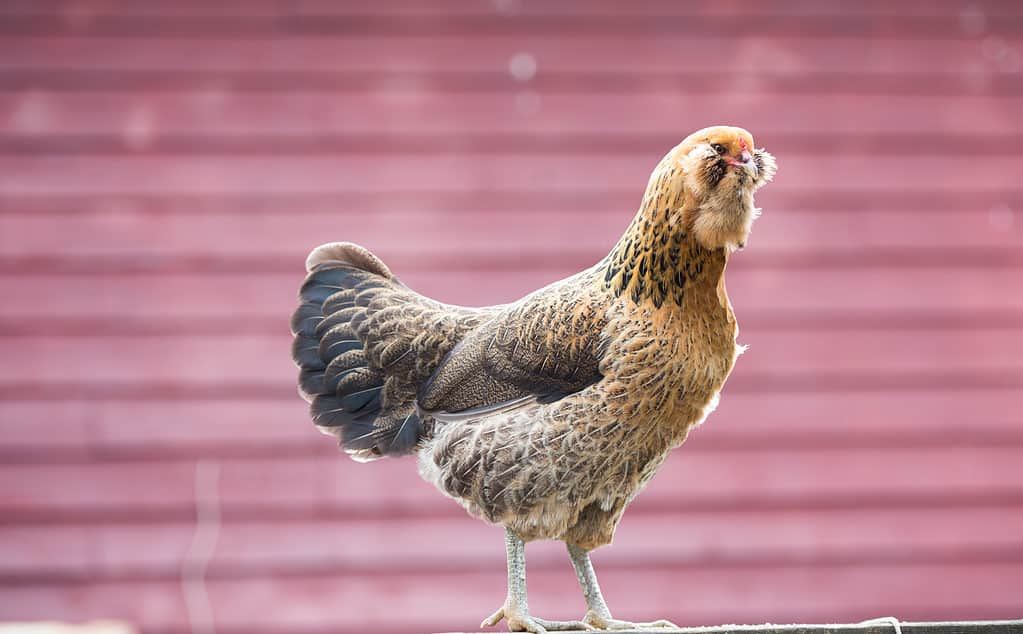
Ameraucana chickens stand out from the crowd thanks to their distinctive coloring and fluffy beards.
©Anna Hoychuk/Shutterstock.com
2. Araucana
This purebred bird has the specific gene necessary for blue egg laying. They won’t exclusively lay in a single shade. But this color shows up often enough that many people opt for adding Araucanas to their flock.
Araucanas were recognized as a breed in 1976 by the American Poultry Association (APA). These distinctive birds don’t have any tails or beards.
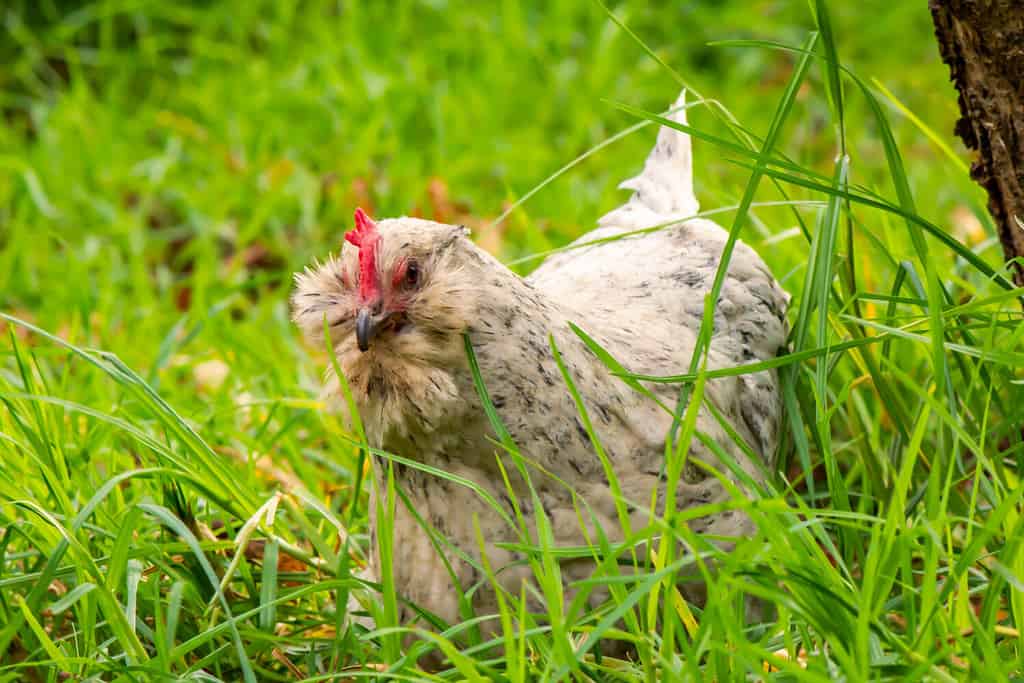
Araucanas have the specific gene necessary for blue egg laying.
©Vampyre Zen/Shutterstock.com
3. Arkansas Blue
This hybrid is medium-sized. These birds produce a large amount of eggs and don’t really like being around people. A scientist crossed Araucanas and Leghorns to target the best traits of each. The result was a blue/gray feather and hens that lay more than five blue eggs weekly.
4. Lushi
These small chickens originate in China and are significantly smaller than other breeds. They only reach about three pounds at maturity. Lushi chickens don’t have set standards, so you can get a range of feather colors. This breed doesn’t lay many eggs (possibly two a week). But the ones they do produce are lovely shades of blue and pink.
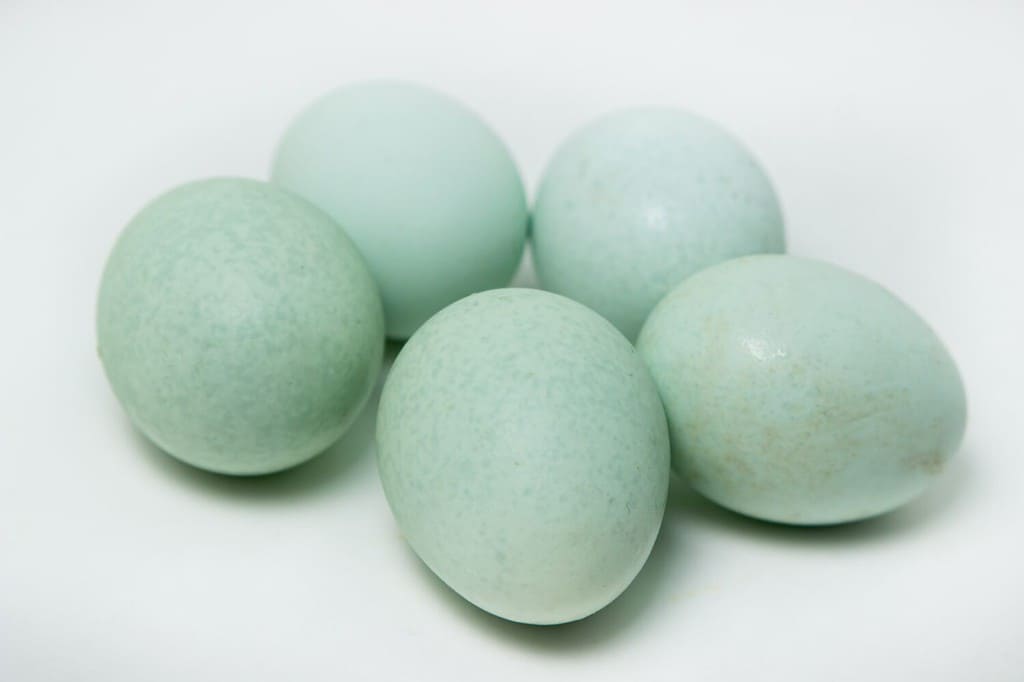
©Nerza/Shutterstock.com
5. Cream Legbar
This unique chicken arrived on the scene in 1931. It was the result of a cross between four different breeds. They have magnificent cream-colored feathers and lay blue eggs. For many years, eggs other than brown and white weren’t that popular. So, this breed nearly became extinct. Now, it has risen drastically in popularity. Many people seek this breed out specifically for its blue eggs.
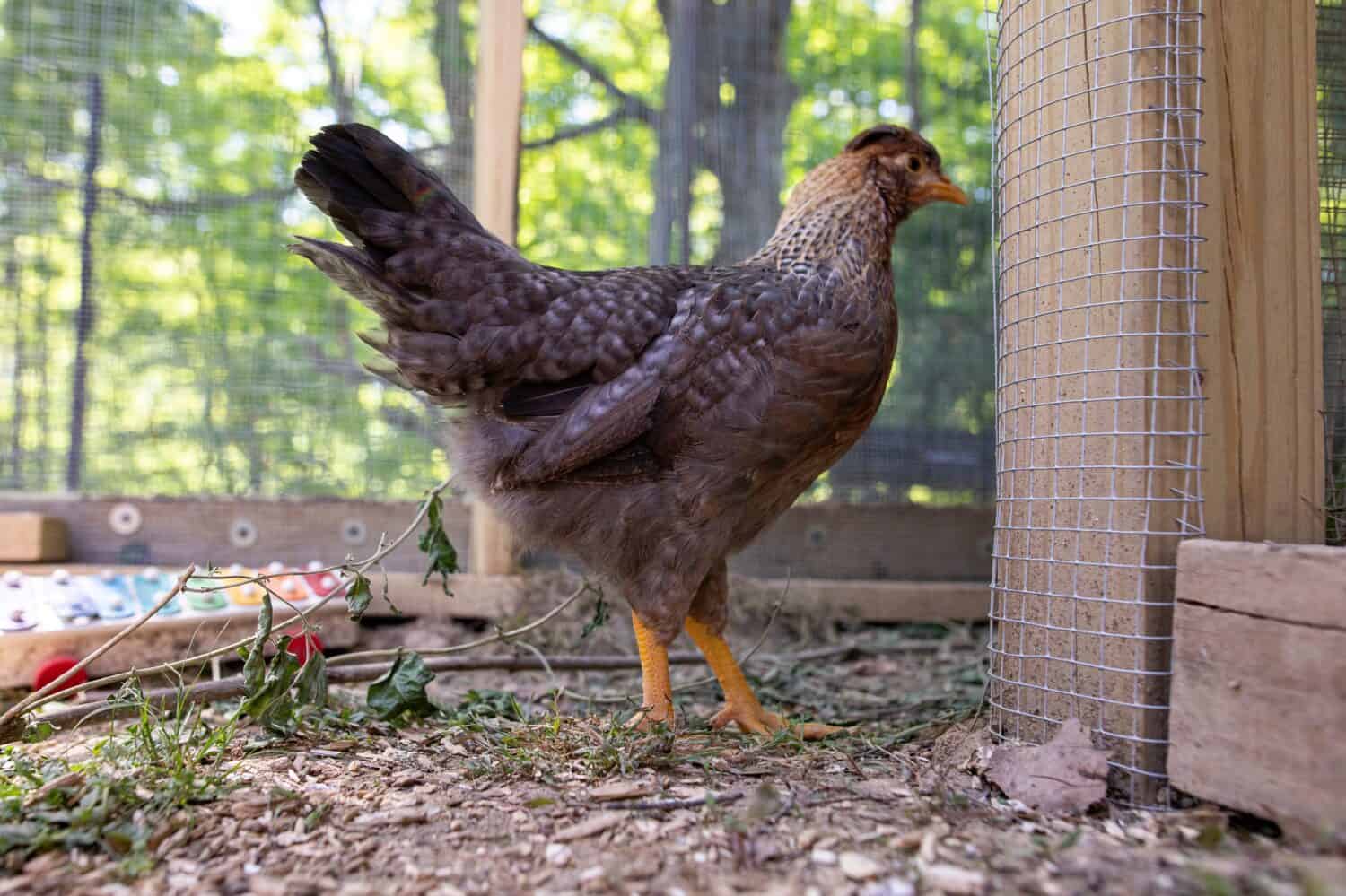
Cream legbars were developed in the early 20th century for their lovely cream-colored feathers. They also lay a decent amount of blue eggs weekly.
©Allison McAdams/Shutterstock.com
6. Dongxiang
These chickens are primarily found in China. But that doesn’t mean they are impossible to locate elsewhere. They have black skin and hold a revered place in China. Dongxiang hens don’t weigh more than three pounds at maturity. However, roosters can weigh a few ounces heavier. This breed lays about two blue eggs weekly.
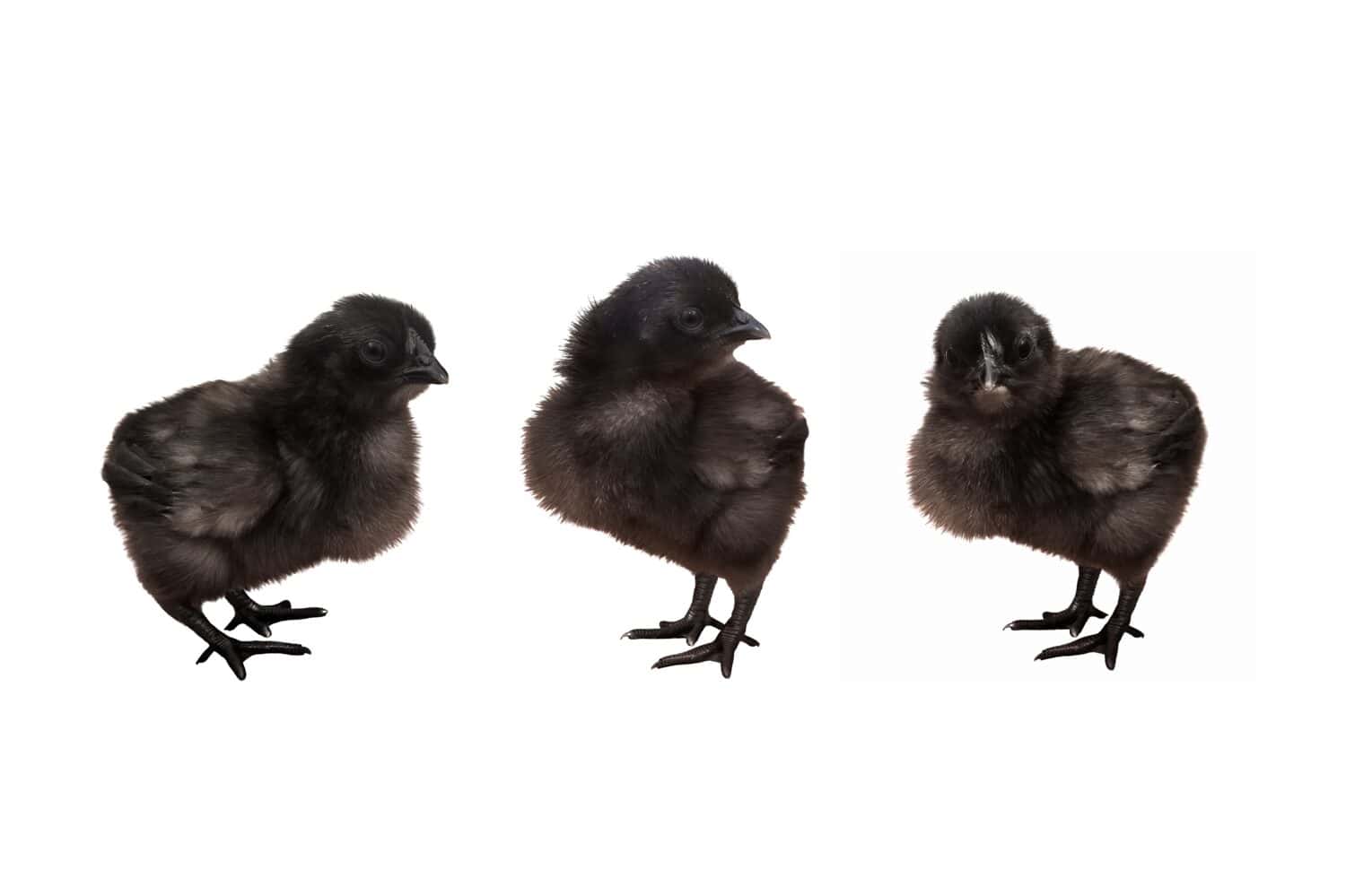
Dongxiang chickens are all black and are native to China. They lay blue eggs that are in striking contrast to their skin and feathers.
©Olga Salt/Shutterstock.com
7. Easter Egger
The Easter egger is a hybrid chicken developed specifically for its blue eggs. They are incredibly friendly and lovable birds that will happily hang out in your lap. Easter eggers are docile, making them great around small children. Hens weigh around found pounds, and roosters not much more than that. They are a healthy breed. You can expect around four eggs a week from each hen. However, not all eggs will be blue. You may get a range of fun shades.
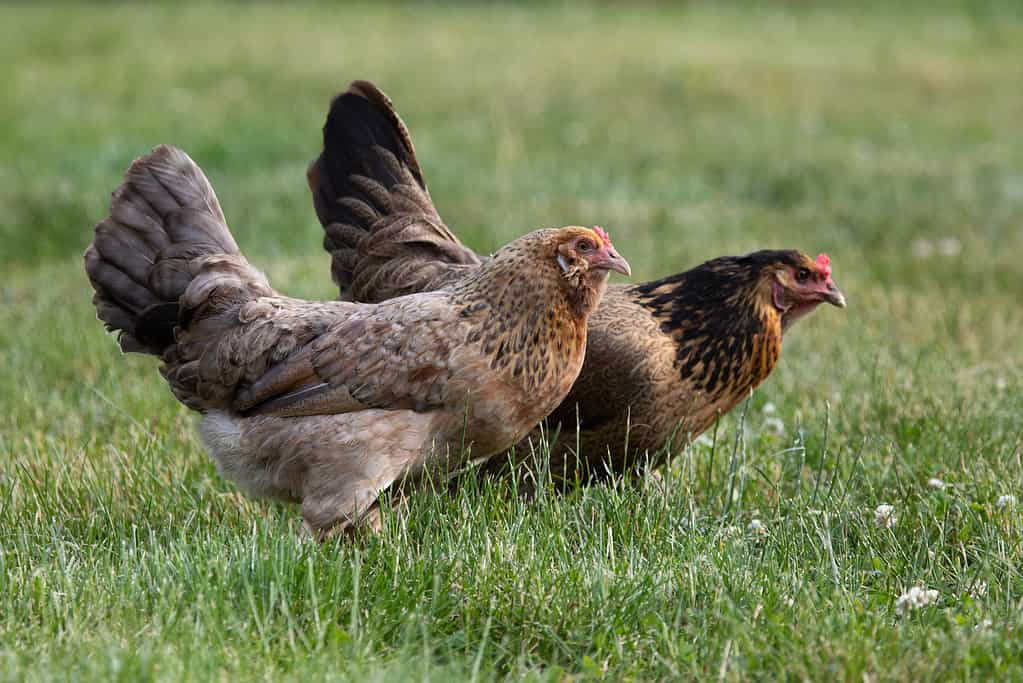
Easter egger chickens were developed for their blue eggs, but they really lay a mix of egg colors.
©JZHunt/ via Getty Images
8. Whiting True Blue
Whiting True Blues came about after an avid fisherman wanted better feathers for his fly fishing rod. He started cross-breeding his own chickens until he settled on this breed. They have feathers that hold up very well to tying. And the best part is that hens lay roughly three to four eggs weekly. This is a medium-sized breed with no set coloring.
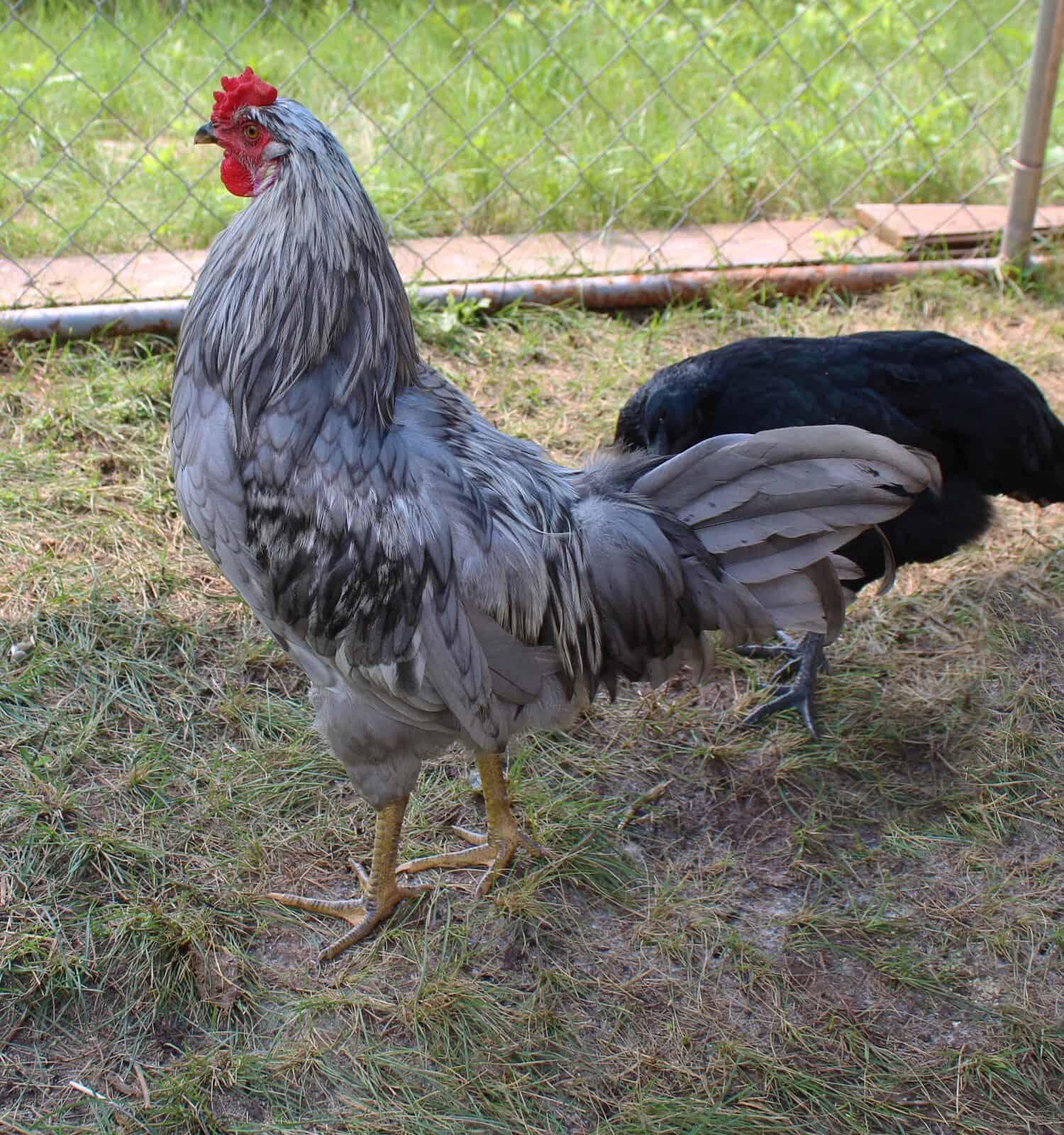
Whiting True Blues have magnificent coloring and sturdy feathers that are good for fishing, and they lay a moderate amount of blue eggs weekly.
©Sarah Macor/Shutterstock.com
9. Azure Blue
Another hybrid bred for its eggs is the Azure blue. This breed is a more recent development. It has stunning white feathers and lays an abundance of blue eggs. Expect around five to six eggs weekly. They are also friendly and easy-going, making them a great addition to family flocks.
10. Shetland Hen
Shetland Hens are difficult (but not impossible) to find in North America. However, if you do get a chance to purchase one or more, jump on the opportunity. This historic breed dates back to the Spaniards. They had chickens that intermixed with local Scottish breeds. The result was the Shetland Hen. This breed has tufted feathering on its head and lays beautiful blue and green eggs.
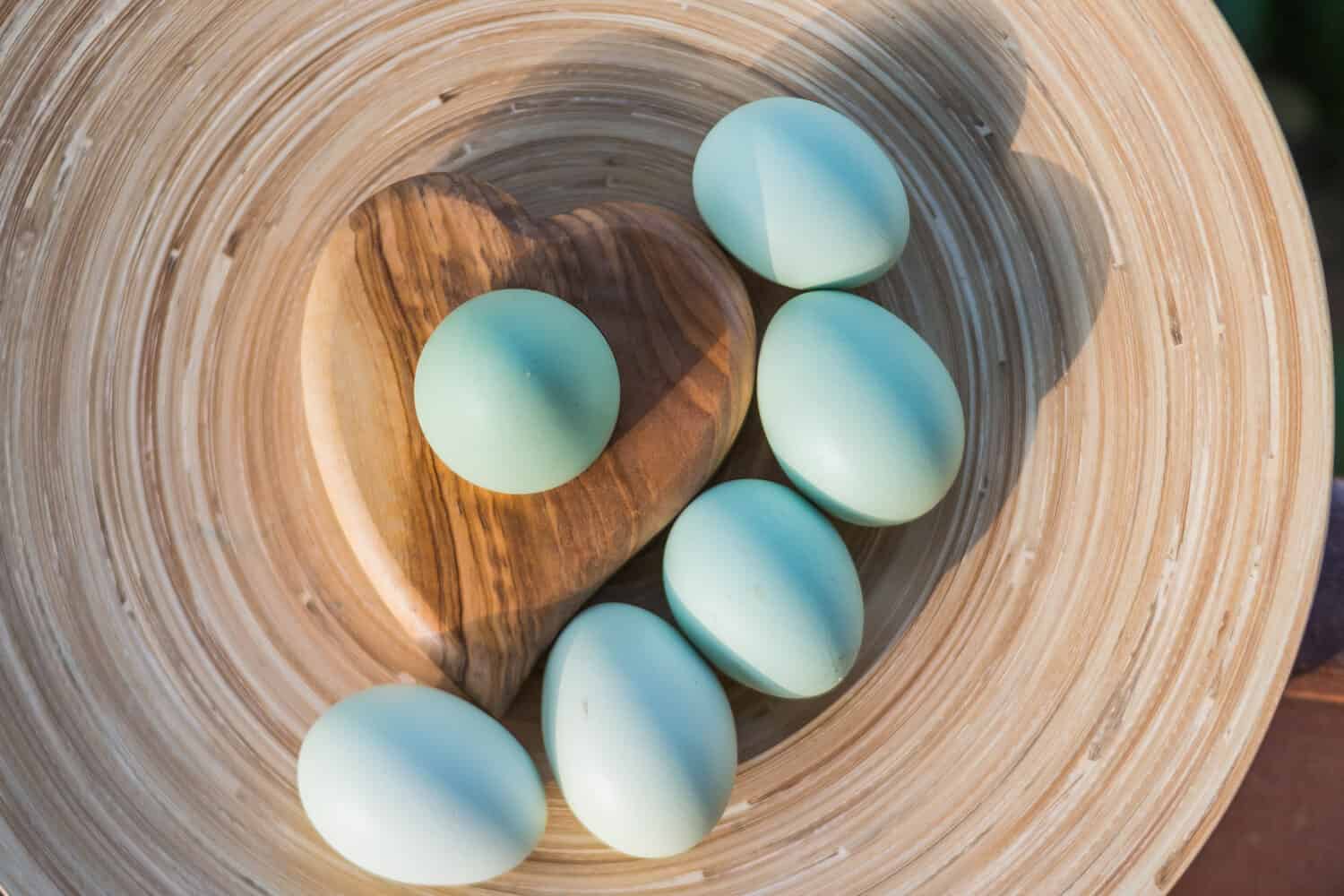
Blue eggs are not all one shade. They may be light, dark, or turquoise.
©Yulia YasPe/Shutterstock.com
11. Fibro Easter Egger
This hybrid is new on the scene. It was developed to have black legs and black feathers. It is a designer bird that will lay around four to five eggs weekly. But you don’t have to settle for a single egg color if you get your hands on a fibro easter egger. They produce a range, including rose, brown, and blue.
12. Steel Eggers
Steel eggers were developed primarily for their plumage, which has a magnificent blue tint. They also have a crest and beards. This hybrid does lay blue eggs, but not consistently. The hens produce between three and five eggs weekly that may turn out blue, brown, or green.
13. Schijndelaar
Schijndelaar chickens are a newer Dutch breed that is hard to find in the United States. They have a unique appearance and are fun to keep around. Expect a moderate amount of eggs weekly (in the three to four range).
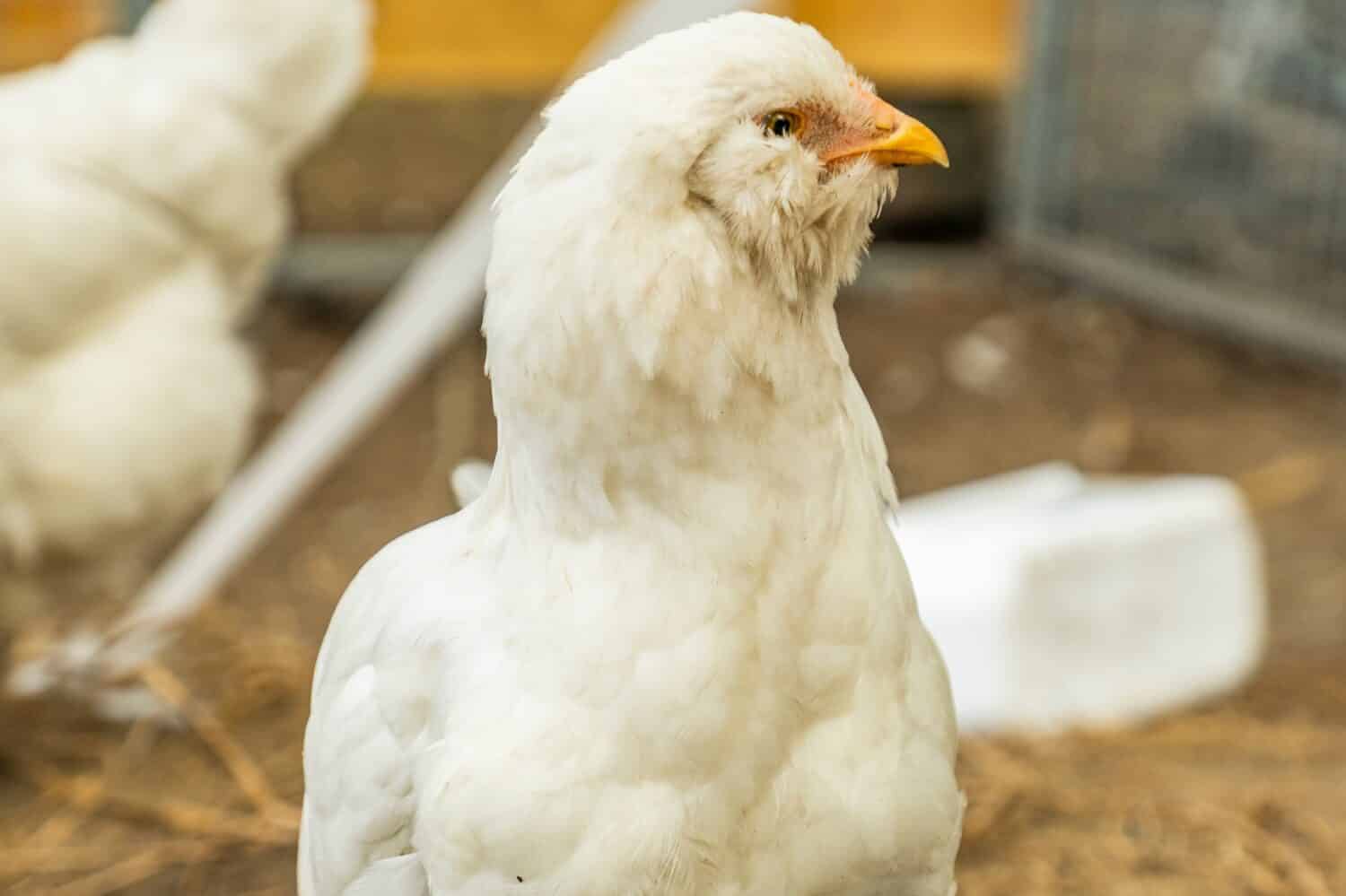
Schijndelaars are Dutch chickens that are difficult to find but well worth the effort.
©Hanneke Wetzer/Shutterstock.com
14. Sapphire Jewel
Another designer chicken is the Sapphire Jewel. It was developed primarily for its high egg production. The hens lay a shocking number of eggs. Expect six to seven eggs every week, all of which are blue. There is no set standard for the feather colors in this hybrid. So, you will end up with a fun mix!
15. Opal Legbar
Opal legbars are a fascinating breed. This hybrid came out of mixing multiple legbar breeds together. Breeders selected a gene that makes their feathers a lovely lavender color. It is not a recognized breed yet, but that doesn’t hinder its popularity. Opal legbars fly out of hatcheries every year. Hens lay three to five blue eggs weekly.
16. Super Blue Egger
This designer hybrid was bred solely for its shockingly blue eggs. No one is sure which breeds contributed to the cross-breeding. However, that doesn’t stop people from buying these unique birds. They are curious, friendly, and fun to have around. Hens will lay about five to six eggs every week. Most are blue, but some do come out brown occasionally.
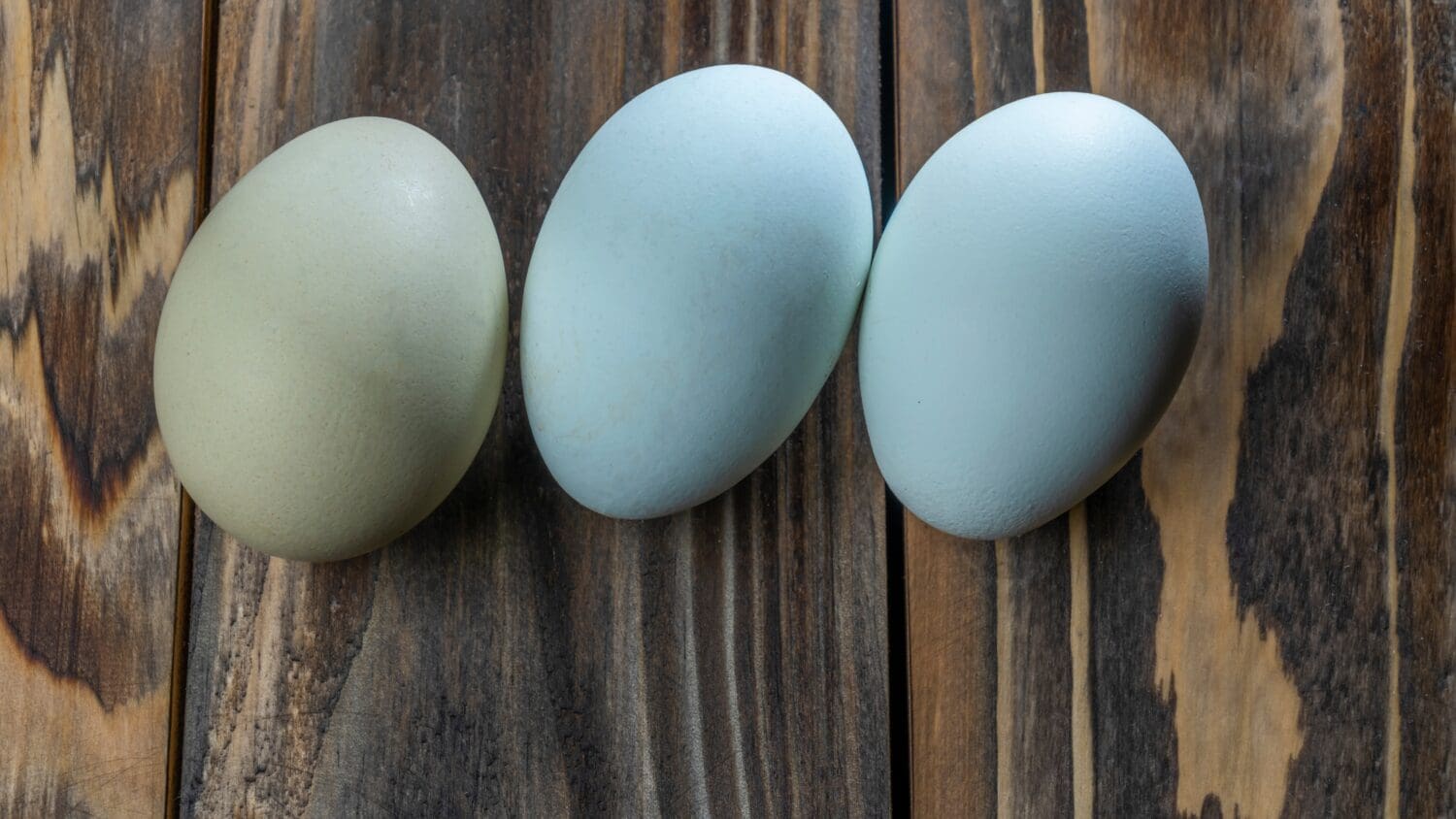
Super Blue Eggers lay up to six eggs a week.
©kalyanby/Shutterstock.com
17. Lakeside Egger
A designer breed that is worth hunting for is the Lakeside Egger. They are calm and cold-hardy, making them ideally suited for countless environments. Lakeside eggers lay four to five medium-sized blue eggs weekly. They have beards, crests, and barred plumage.
Summary of 17 Chicken Breeds That Lay Blue Eggs
| Number | Breed or Hybrid | Lifespan |
|---|---|---|
| 1 | Ameraucana | 7 – 8 yrs |
| 2 | Araucana | 5-8 years |
| 3 | Arkansas Blue | 6-8 years |
| 4 | Lushi | 18 to 24 months old |
| 5 | Cream Legbar | 5-10 years |
| 6 | Dongxiang | 10 years |
| 7 | Easter Egger | 5-8 years |
| 8 | Whiting True Blue | 5-10 years |
| 9 | Azure Blue | N/A |
| 10 | Shetland Hen | 6-8 years |
| 11 | Fibro Easter Egger | 5-8 years |
| 12 | Steel Eggers | 5-8 years |
| 13 | Schijndelaar | N/A |
| 14 | Sapphire Jewel | 8 to 10 years |
| 15 | Opal Legbar | 5-8 years |
| 16 | Super Blue Egger | 3-5 years |
| 17 | Lakeside Egger | 8-10 years |
The photo featured at the top of this post is © terry6970/ via Getty Images
Thank you for reading! Have some feedback for us? Contact the AZ Animals editorial team.






